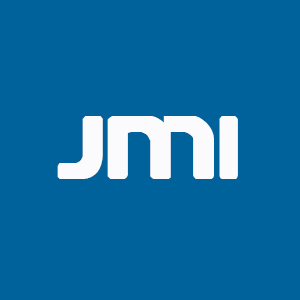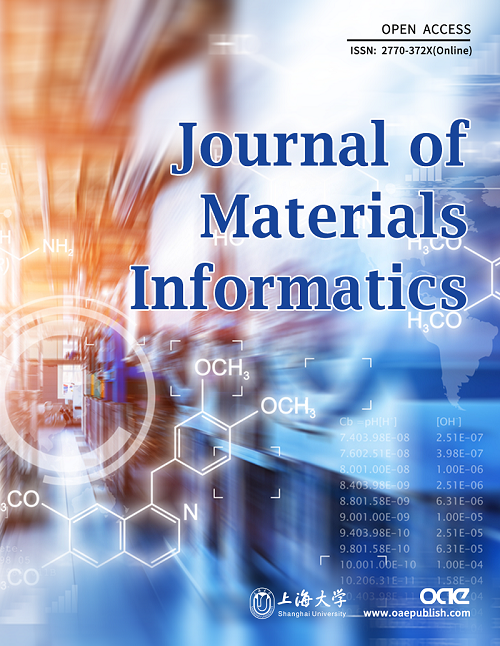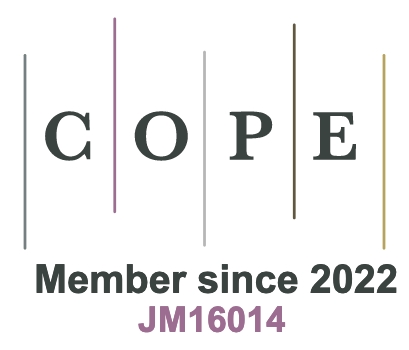REFERENCES
1. Li L, Wang P, Shao Q, Huang X. Metallic nanostructures with low dimensionality for electrochemical water splitting. Chem Soc Rev 2020;49:3072-106.
2. Jiao Y, Zheng Y, Jaroniec M, Qiao SZ. Design of electrocatalysts for oxygen- and hydrogen-involving energy conversion reactions. Chem Soc Rev 2015;44:2060-86.
3. Huang J, Jiang Y, An T, Cao M. Increasing the active sites and intrinsic activity of transition metal chalcogenide electrocatalysts for enhanced water splitting. J Mater Chem A 2020;8:25465-98.
4. Kim HJ, Kim HY, Joo J, et al. Recent advances in non-precious group metal-based catalysts for water electrolysis and beyond. J Mater Chem A 2022;10:50-88.
6. Liu M, Zhang R, Chen W. Graphene-supported nanoelectrocatalysts for fuel cells: synthesis, properties, and applications. Chem Rev 2014;114:5117-60.
7. Majlan E, Rohendi D, Daud W, Husaini T, Haque M. Electrode for proton exchange membrane fuel cells: a review. Renew Sust Energ Rev 2018;89:117-34.
8. Nørskov JK, Bligaard T, Logadottir A, et al. Trends in the exchange current for hydrogen evolution. J Electrochem Soc 2005;152:J23.
9. Seh ZW, Kibsgaard J, Dickens CF, Chorkendorff I, Nørskov JK, Jaramillo TF. Combining theory and experiment in electrocatalysis: insights into materials design. Science 2017;355:eaad4998.
10. Xu H, Cheng D, Cao D, Zeng XC. A universal principle for a rational design of single-atom electrocatalysts. Nat Catal 2018;1:339-48.
11. Benck JD, Hellstern TR, Kibsgaard J, Chakthranont P, Jaramillo TF. Catalyzing the hydrogen evolution reaction (HER) with molybdenum sulfide nanomaterials. ACS Catal 2014;4:3957-71.
12. Du H, Kong RM, Guo X, Qu F, Li J. Recent progress in transition metal phosphides with enhanced electrocatalysis for hydrogen evolution. Nanoscale 2018;10:21617-24.
13. Sun J, Ren M, Yu L, et al. Highly efficient hydrogen evolution from a mesoporous hybrid of nickel phosphide nanoparticles anchored on cobalt phosphosulfide/phosphide nanosheet arrays. Small 2019;15:e1804272.
14. Yan Q, Chen X, Wei T, et al. Hierarchical edge-rich nickel phosphide nanosheet arrays as efficient electrocatalysts toward hydrogen evolution in both alkaline and acidic conditions. ACS Sustainable Chem Eng 2019;7:7804-11.
15. Gao Q, Zhang W, Shi Z, Yang L, Tang Y. Structural design and electronic modulation of transition-metal-carbide electrocatalysts toward efficient hydrogen evolution. Adv Mater 2019;31:1802880.
16. Han N, Yang KR, Lu Z, et al. Nitrogen-doped tungsten carbide nanoarray as an efficient bifunctional electrocatalyst for water splitting in acid. Nat Commun 2018;9:924.
17. Zhou S, Zhou G, Jiang S, Fan P, Hou H. Flexible and refractory tantalum carbide-carbon electrospun nanofibers with high modulus and electric conductivity. Mater Lett 2017;200:97-100.
18. Zhang B, Liu J, Wang J, et al. Interface engineering: The Ni(OH)2/MoS2 heterostructure for highly efficient alkaline hydrogen evolution. Nano Energy 2017;37:74-80.
19. Ling Y, Yang Z, Zhang Q, Zhang Y, Cai W, Cheng H. A self-template synthesis of defect-rich WS2 as a highly efficient electrocatalyst for the hydrogen evolution reaction. Chem Commun 2018;54:2631-4.
20. Pan Y, Liu S, Sun K, et al. A bimetallic Zn/Fe polyphthalocyanine-derived single-atom Fe-N4 catalytic site:a superior trifunctional catalyst for overall water splitting and Zn-air batteries. Angew Chem Int Ed Engl 2018;57:8614-8.
21. Cao L, Luo Q, Chen J, et al. Dynamic oxygen adsorption on single-atomic Ruthenium catalyst with high performance for acidic oxygen evolution reaction. Nat Commun 2019;10:4849.
22. Varela AS, Ju W, Strasser P. Molecular nitrogen-carbon catalysts, solid metal organic framework catalysts, and solid metal/nitrogen-doped carbon (MNC) catalysts for the electrochemical CO2 reduction. Adv Energy Mater 2018;8:1703614.
23. Yao Y, Hu S, Chen W, et al. Engineering the electronic structure of single atom Ru sites via compressive strain boosts acidic water oxidation electrocatalysis. Nat Catal 2019;2:304-13.
24. Wang X, Li Z, Qu Y, et al. Review of metal catalysts for oxygen reduction reaction: from nanoscale engineering to atomic design. Chem 2019;5:1486-511.
25. Zhao Y, Zhou H, Chen W, et al. Two-step carbothermal welding to access atomically dispersed Pd1 on three-dimensional zirconia nanonet for direct indole synthesis. J Am Chem Soc 2019;141:10590-4.
26. Lei Y, Wang Y, Liu Y, et al. Designing atomic active centers for hydrogen evolution electrocatalysts. Angew Chem Int Ed Engl 2020;59:20794-812.
27. Wang Y, Su H, He Y, et al. Advanced electrocatalysts with single-metal-atom active sites. Chem Rev 2020;120:12217-314.
28. Zhuo HY, Zhang X, Liang JX, Yu Q, Xiao H, Li J. Theoretical understandings of graphene-based metal single-atom catalysts: stability and catalytic performance. Chem Rev 2020;120:12315-41.
29. Khalid M, Bhardwaj PA, Honorato AMB, Varela H. Metallic single-atoms confined in carbon nanomaterials for the electrocatalysis of oxygen reduction, oxygen evolution, and hydrogen evolution reactions. Catal Sci Technol 2020;10:6420-48.
30. Fei H, Dong J, Arellano-Jiménez MJ, et al. Atomic cobalt on nitrogen-doped graphene for hydrogen generation. Nat Commun 2015;6:8668.
31. Qu Y, Chen B, Li Z, et al. Thermal emitting strategy to synthesize atomically dispersed Pt metal sites from bulk Pt metal. J Am Chem Soc 2019;141:4505-9.
32. Xue Y, Huang B, Yi Y, et al. Anchoring zero valence single atoms of nickel and iron on graphdiyne for hydrogen evolution. Nat Commun 2018;9:1460.
33. Lu B, Guo L, Wu F, et al. Ruthenium atomically dispersed in carbon outperforms platinum toward hydrogen evolution in alkaline media. Nat Commun 2019;10:631.
34. Zhang L, Si R, Liu H, et al. Atomic layer deposited Pt-Ru dual-metal dimers and identifying their active sites for hydrogen evolution reaction. Nat Commun 2019;10:4936.
35. Bai L, Hsu CS, Alexander DTL, Chen HM, Hu X. A cobalt-iron double-atom catalyst for the oxygen evolution reaction. J Am Chem Soc 2019;141:14190-9.
36. He T, Puente Santiago AR, Du A. Atomically embedded asymmetrical dual-metal dimers on N-doped graphene for ultra-efficient nitrogen reduction reaction. J Catal 2020;388:77-83.
37. Zheng X, Yao Y, Ye W, Gao P, Liu Y. Building up bimetallic active sites for electrocatalyzing hydrogen evolution reaction under acidic and alkaline conditions. Chem Eng J 2021;413:128027.
38. Zhou Y, Song E, Chen W, et al. Dual-metal interbonding as the chemical facilitator for single-atom dispersions. Adv Mater 2020;32:e2003484.
39. Zhao W, Luo C, Lin Y, et al. Pt-Ru dimer electrocatalyst with electron redistribution for hydrogen evolution reaction. ACS Catal 2022;12:5540-8.
40. Lu B, Liu Q, Chen S. Electrocatalysis of single-atom sites: impacts of atomic coordination. ACS Catal 2020;10:7584-618.
41. Perdew JP, Burke K, Ernzerhof M. Generalized gradient approximation made simple. Phys Rev Lett 1996;77:3865-8.
42. Kresse G, Furthmüller J. Efficient iterative schemes for ab initio total-energy calculations using a plane-wave basis set. Phys Rev B Condens Matter 1996;54:11169-86.
43. Grimme S, Antony J, Ehrlich S, Krieg H. A consistent and accurate ab initio parametrization of density functional dispersion correction (DFT-D) for the 94 elements H-Pu. J Chem Phys 2010;132:154104.
44. Zhang C, Qin S, Li B, Jin P. Dual-metal atom incorporated N-doped graphenes as oxygen evolution reaction electrocatalysts: high activities achieved by site synergies. J Mater Chem A 2022;10:8309-23.
45. Momma K, Izumi F. VESTA 3 for three-dimensional visualization of crystal, volumetric and morphology data. J Appl Cryst 2011;44:1272-6.
46. Yang TT, Wang A, House SD, Yang J, Lee JK, Saidi WA. Computationally guided design to accelerate discovery of doped β-Mo2C catalysts toward hydrogen evolution reaction. ACS Catal 2022;12:11791-800.
47. Nørskov JK, Rossmeisl J, Logadottir A, et al. Origin of the overpotential for oxygen reduction at a fuel-cell cathode. J Phys Chem B 2004;108:17886-92.
48. Hossain MD, Liu Z, Zhuang M, et al. Rational design of graphene-supported single atom catalysts for hydrogen evolution reaction. Adv Energy Mater 2019;9:1803689.
50. Lim J, Back S, Choi C, Jung Y. Ultralow overpotential of hydrogen evolution reaction using Fe-doped defective graphene: a density functional study. ChemCatChem 2018;10:4450-5.
51. Yang Y, Zhang H, Liang Z, et al. Role of local coordination in bimetallic sites for oxygen reduction: a theoretical analysis. J Energy Chem 2020;44:131-7.
52. Crabtree RH. Dihydrogen complexes: some structural and chemical studies. Acc Chem Res 1990;23:95-101.
53. Heinekey DM, Lledŏs A, Lluch JM. Elongated dihydrogen complexes: what remains of the H-H bond? Chem Soc Rev 2004;33:175-82.
54. Kubas GJ. Fundamentals of H2 binding and reactivity on transition metals underlying hydrogenase function and H2 production and storage. Chem Rev 2007;107:4152-205.
55. Kubas GJ. Molecular hydrogen complexes: coordination of a .sigma. bond to transition metals. Acc Chem Res 1988;21:120-8.
57. Alcaraz G, Grellier M, Sabo-Etienne S. Bis sigma-bond dihydrogen and borane ruthenium complexes: bonding nature, catalytic applications, and reversible hydrogen release. Acc Chem Res 2009;42:1640-9.
58. Di Liberto G, Cipriano LA, Pacchioni G. Role of dihydride and dihydrogen complexes in hydrogen evolution reaction on single-atom catalysts. J Am Chem Soc 2021;143:20431-41.
59. Di Liberto G, Cipriano LA, Pacchioni G. Single atom catalysts: what matters most, the active site or the surrounding? ChemCatChem 2022;14:e202200611.








